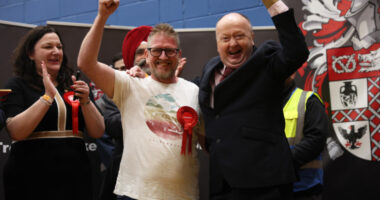Policy makers on Sunday debated the root cause of a growing shortage of workers that threatens to restrain the pace of economic growth while the U.S. emerges from the Covid-19 pandemic.
Many Republicans say enhanced and extended unemployment benefits are discouraging Americans from seeking work, especially in low-wage jobs where the aid often pays more than they earned at previous jobs. The Biden administration and Democrats say other factors, including lack of access to child care and shortages of computer chips, are holding back more robust job growth.
U.S. employers added a seasonally adjusted 266,000 jobs in April, the Labor Department said Friday. The figure was a sharp slowdown from March and well below the one million jobs economists expected to be created. A separate report showed there were 7.4 million unfilled jobs in the U.S.
Neel Kashkari, president of the Federal Reserve Bank of Minneapolis, said labor supply is a factor holding back better overall growth, at least temporarily.
“There is some truth to the unemployment benefits, maybe, being a disincentive,” he said in a CBS interview that aired Sunday. “I see that in the data and I see that in anecdotes as we talk to people.”
Under relief bills passed by Congress, those receiving jobless benefits get an additional $300 a week on top of regular state benefits, which average $318 a week, according to the Labor Department. That means the average unemployment recipient earns better than the equivalent of working full time at $15 an hour. Those enhanced benefits are available until September, for a maximum of nearly 18 months—about three times longer than most states typically allow.
Mr. Kashkari said that child-care shortages, schools with limited capacity and fear of the virus, even among those who are vaccinated, also weigh on people seeking jobs. Mr. Kashkari, who previously worked in the George W. Bush administration, said he recently flew in a plane, but is still hesitant to dine inside a restaurant even after being vaccinated against Covid-19.
Congress and the Federal Reserve have acted aggressively to position the economy for a fast recovery, Mr. Kashkari said, which helped inform optimistic economic projections. But the recovery also depends on “how we are all feeling and the confidence that ultimately we need to have to fully restore the economy,” he said.
Mr. Kashkari said he expects stronger job growth in the second half of the year, when virus fears subside, schools fully open and extended unemployment benefits are scheduled to expire.
Commerce Secretary Gina Raimondo said the Biden administration is monitoring the effect unemployment benefits are having on Americans’ willingness to work, but added, “There’s nothing in the data which would suggest that that’s the reason people are out of work.”

Commerce Secretary Gina Raimondo said workers were fearful of returning to workplaces.
Photo: Andrew Harnik/Associated Press
The U.S. still has about eight million fewer jobs than before the pandemic took hold last year, and the number of job seekers rose in April from March, the Labor Department said. Friday’s data also showed that wages and average hours worked a week rose last month, which could suggest companies are needing to pay more to find employees and asking current staff to do more.
“The No. 1 reason now that people aren’t going back to work is…fear,” Ms. Raimondo said in a CBS interview that aired Sunday, adding that child care and a shortage of suppliers, particularly semiconductors, are also limitations. Auto makers shed 27,000 jobs in April when several factories were idled due to chip shortages.
The U.S. Economy
Increasing domestic chip production and expanding access to child care are goals of President Biden’s recent spending proposals, Ms. Raimondo said. However, those initiatives would likely take years to be implemented and depend on bills getting passed by Congress.
The commerce secretary also said that the labor market varies across the country, and added it is appropriate for governors to adjust policies. Republican governors in South Carolina, Montana and Arkansas have ended the $300 enhanced payments paid for by the federal government.
While Utah hasn’t taken that step, Republican Gov. Spencer Cox said benefits need to be restrained to return workers to the job. Utah’s unemployment rate was 2.9% in March, tied for the lowest in the U.S., according to the Labor Department.
“The biggest problem we have right now in the state of Utah are finding workers for the jobs that are available,” he said in a CNN interview that aired Sunday. He said he had heard from workers that the benefits were a disincentive. “It is a terrible jobs report…But that’s what happens when we pay people not to work.”
Write to Eric Morath at [email protected]
Copyright ©2020 Dow Jones & Company, Inc. All Rights Reserved. 87990cbe856818d5eddac44c7b1cdeb8








